
123rf.com (Rommel Canlas)
NVidia’s RTX GPUs that end in a 70 — like the 1070 or 2070 — generally represent the sweet spot between price and performance. And the RTX 2070 is no exception. Not only is this graphics card a solid performer that can handle 4K gaming and some ray tracing — which will soon be a huge deal in PC gaming – but it’s affordable, often costing hundreds less than big brother laptops that contain the RTX 2080.
The good news is that you can get the Nvidia RTX 2070 in a lot of laptops right now, and most of them have gaming baked into their DNA. In fact, there are RTX 2070 laptops from all the major PC makers, including Dell, Alienware, Aus, HP, MSI, and others. Which one should you choose for your next gaming or graphics laptop? We’ve sorted through the competition and rounded up the best 9 options. Here are the best RTX 2070 laptops available in 2022.
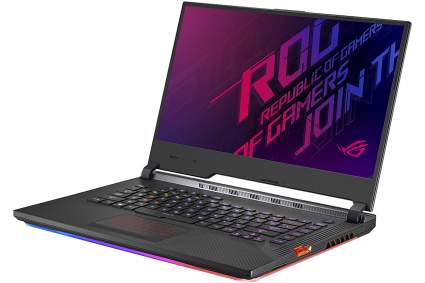
|
Amazon Customer Reviews
|
Price: $2,799.00 Shop at Amazon | Shop now Read our review |
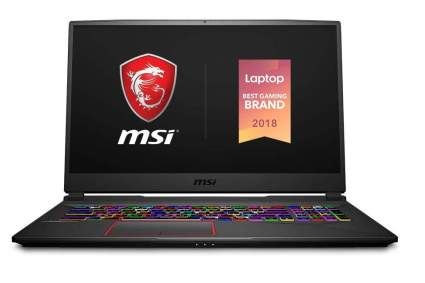
|
Amazon Customer Reviews
|
Price: $1,679.00 Shop at Amazon | Shop now Read our review |

|
Amazon Customer Reviews
|
Price: $1,800.00 Shop at Amazon | Shop now Read our review |
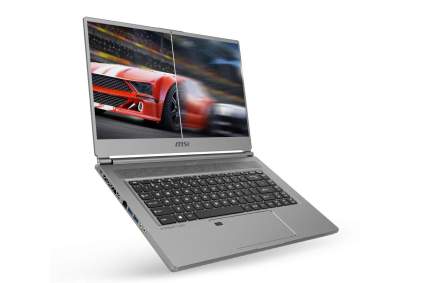
|
Amazon Customer Reviews
|
Price: $2,599.00 Shop at Amazon | Shop now Read our review |
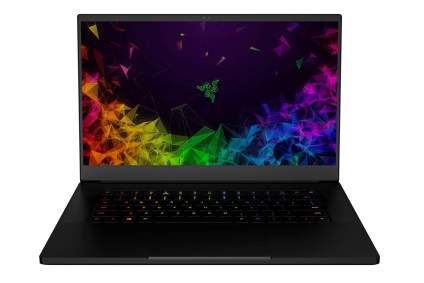
|
Amazon Customer Reviews
|
Price: $1,319.99 Shop at Amazon | Shop now Read our review |
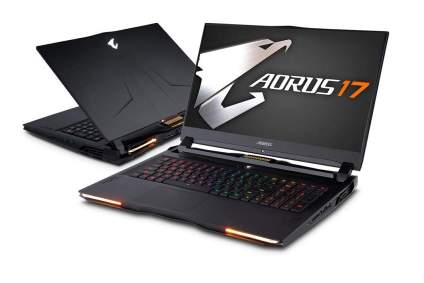
|
Amazon Customer Reviews
|
Price: $1,149.99 Shop at Amazon | Shop now Read our review |
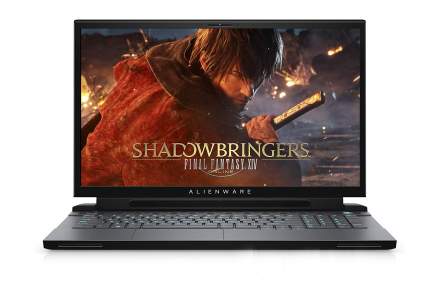
|
Amazon Customer Reviews
|
Price: $1,499.00 Shop at Amazon | Shop now Read our review |

|
Amazon Customer Reviews
|
Price: $1,699.95 Shop at Amazon | Shop now Read our review |
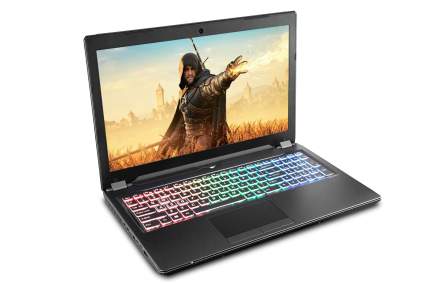
|
Amazon Customer Reviews
|
Price: $1,849.00 Shop at Amazon | Shop now Read our review |
-
1. Asus ROG Strix Scar III
Pros:- Large 1TB SSD
- 16GB RAM
- Well-engineered cooling
- Good battery life
Cons:- Fans can be noisy
- Heats up quickly
- No webcam
Processor Intel Core i7-9750H | RAM 16GB DDR4 2666MHz | Display 15.6 inches | GPU Nvidia GeForce RTX 2070 | Hard drive 1TB PCIe NVMe SSD | Dimensions 14.19 x 10.83 x 0.98 inches | Weight 5.67 pounds
Like most of the laptops in this list, the Asus ROG Strix Scar III is aimed squarely at gamers — but in this case, you can believe that gamers really were a priority at every step of the design process. The 15.6-inch display (1920 x 1080-pixel resolution featuring an IPS panel) has a slim bezel surrounding it on the top and sides, adding up to a generous 81% screen-to-body ratio. The laptop will get hot, so the system includes dual, adjustable fans that have been optimized with 17% more airflow and anti-dust tunnels to increase performance and stability. Asus also claims the laptop undergoes extensive vibration and drop testing. The keyboard includes custom full-color RBG lighting with a colorful lightbar that makes the laptop look a bit like a lightshow — that’s not to everyone’s taste, but when you program all the lights to their full potential, there’s no mistaking this machine is aimed at gamers. The keyboard also features N-key rollover for multi-key inputs — ideal for fast action and macro activations.
The Scar has a unique feature: A keystone on the right side of the chassis is a small magnetic, encrypted flash drive-like accessory. It can be used to quickly load game settings or other configurations, and can securely store files in an encrypted drive. Is it useful? That’s arguable — but it definitely is cool, and isn’t something you’ll find in most other laptops. (But if the keystone appeals to you, keep in mind that you can also get it in an RTX 2080 laptop from Asus as well.)
Under the hood, this system has a 9th generation el Core i7-9750H processor, 16GB RAM, and a 1TB SSD, but you can opt for a lower-powered configuration that isn’t as powerful and has a 512GB hard drive. Honestly, though, that’s going to be too anemic for modern gaming; you really need the full terabyte or you run the risk of running out of storage. The Scar is packed with ports: you get a full-size RJ-45 network port, HDMI (handy for sending your video to a larger, higher-quality desktop monitor), three USB-A and one USB-C, and audio jacks. There’s no Kensington lock port, though, which may be important if you need to secure your laptop when you travel. All things considered, this system can hold its own against even the newest Ryzen 4000 Series laptops from AMD.
And travel you can do with the Scar, which has one of the best battery life ratings you’re likely to find in a gamer rig. This laptop can run for nearly five hours on a charge, which means there are times when you might not even need to carry the power brick with you to get a full work or gaming session out of the laptop. If you need more “screen estate” to get your work done, you can always add a second portable display.
This machine is beefy enough for a flight or space simulator. If you want to play a game like Elite: Dangerous on this system, be sure to check out our roundup of the best PC flight sticks as well. And if you have a drone, be sure to check out our recommendation for the best drone cases for travel and storage.
.
Find more Asus ROG Strix Scar III information and reviews here.
-
2. MSI GE75 Raider
Pros:- 17.3-inch desktop replacement display
- Aggressive lightingand styling
- Illuminated USB ports
Cons:- Loud fans
- No G-Sync
- 512GB SSD
Processor Intel Core i7-9750H | RAM 16GB DDR4 2666MHz | Display 17.3 inches | GPU Nvidia GeForce RTX 2070 | Hard drive 512GB NVMe SSD | Dimensions 15.6 x 10.6 x 1.1 inches | Weight 5.73 pounds
This laptop stands out from a lot of the competition with an oversized 17.3-inch display running full HD 1920 x 1080-pixel resolution, making this a solid contender as a desktop replacement. The screen has a 144MHz refresh rate and uses an IPS panel, offering good color accuracy and low latency. But despite the large display, perhaps the very first thing you tend to notice about the MSI GE75 Raider is the keyboard. Yes, the MSI GE75 Raider has per-key RBG lighting, but the key edges are translucent, allowing the perimeter of each key to glow in full vibrant color. It doesn’t affect performance, but it is pretty cool.
That aggressive styling continues throughout the laptop. The case is embossed with a “galactic warship” etching, and even the ports have something unique to say. The three USB A inputs light in red, which looks very cool, but also has practical applications, making them easy to find in the dark. Speaking of ports, the Raider also has an RJ-45 network input, HDMI, DisplayPort, USB-C and audio connectors. If you need a webcam, the Raider includes one, albeit a fairly anemic one with a 720p resolution.
The Raider is powered with a 9th Generation Intel Core i7, though disappointingly, it features a smaller 512GB SSD. On the plus side, there’s plenty of cooling, with vents on both sides, as well as MSI’s Cooler Booster, a combination of nearly a dozen heat pipes to channel away heat and a pair of high-efficiency fans that pull in air from under the chassis.
While this is overall a solid performer at a good price, the system is missing G-Sync, which means that video performance may suffer in some fast-paced games.
-
3. Asus ROG Zephyrus M
Pros:- Solid, titanium construction
- Lightweight 4.39 pounds
- Intel Core i7-9750H
- Per-key RGB lighting
Cons:- USB ports on right side can interfere with mouse
- Limited battery life
- Runs a little hot
Processor Intel Core i7-9750H | RAM 16GB DDR4 2666MHz | Display 15.6 inches | GPU Nvidia GeForce RTX 2070 | Hard drive 1TB PCIe SSD | Dimensions 14.17 x 9.92 x 0.78 inches | Weight 4.39 pounds
Weighing just 4.39 pounds, the Asus ROG Zephyrus M is a relatively lightweight gaming system, equipped with the latest 9th Generation Intel Core i7 processor, 16GB of RAM and full 1TB SSD. To keep things cool, Asus includes a pair of specially tuned fans that are 33% thinner than typical laptop fans and move about 17% more airflow. You also have easy access to three fan modes, able to switch among silent, balanced, and turbo. The turbo mode is loud, though.
The system’s RTX 2070 GPU is driving a high definition 1920×1080 IPS display, which bears a “Pantone Validated” logo. Don’t get too excited about that Pantone certification, though. Yes, it is somewhat reassuring that Pantone has validated the color accuracy of a set of color swatches generated by the display, but keep in mind that it doesn’t say anything about the accuracy of any colors outside of the pretty limited color gamut checked by Pantone. In short, there’s little assurance that your display is calibrated any better than one without the Pantone seal of approval.
Something that you can trust, though, is Asus’s durability testing. The laptop undergoes extensive drop, vibration, and pressure tests, as well as repeated abuse to the keyboard and ports. While technically not rugged, this is a laptop that should stand up to a fair bit of abuse. It also has an edge over many laptops thanks to its mostly metal, titanium construction. That means it can stand up to the kind of abuse students might give it as a daily classwork laptop that is also a superb gaming PC.
The system is equipped with an RJ-45 network port as well as HDMI, audio inputs, a trio of USB A, and one USB-C ports.
The system is also available in an icy Glacier Blue finish — which is stunning, truth be told — but beware, because that version loses the RTX 2070 in favor of an anemic GTX 1660Ti.
-
4. MSI P65 Creator
Pros:- 32GB RAM great for media creation
- Fingerprint reader for security
- Long battery life
Cons:- 512GB SSD
- Connectors and power interefere with mouse
- Gamers will miss lighting
Processor Intel Core i7-9750H | RAM 32GB DDR4 2666MHz | Display 15.6 inches | GPU Nvidia GeForce RTX 2070 | Hard drive 512GB PCIe NVMe SSD | Dimensions 15.08 x 10.24 x 1.16 inches | Weight 4.0 pounds
Unlike most laptops in this class, the MSI P65 Creator is aimed at a slightly different crowd than the gamer — as the target is in the name. MSI sees this as a gaming laptop, to be sure, but also as a productivity tool for creators. Honestly, that doesn’t make it a very different kind of laptop, except that it has a professional, understated all-aluminum body and prominently features a WIndows Hello-compatible biometric fingerprint reader in the touchpad.
Otherwise, you’ll find this system has the same solid pedigree as many other laptops in this list. It features an 8th generation Intel Core i7 processor, but — and here’s where creators will sit up and pay attention — 32GB of RAM rather than the more typical 16GB. Gamers simply don’t need 32GB of memory. But if you’re editing 4K video or batch editing a large number of photos in Adobe Lightroom, the additional RAM is critical to success. By the same token, we’d prefer to see a larger hard drive, but it’s equipped with a 512GB SSD.
The display is a good one, and straddles the middle of the pack of RTX 2060-powered laptops when it comes to overall quality. The 15.6-inch display has a very small 4.9mm bezel, which gives the impression it’s larger than it is. It’s also backed with an IPS panel and MSI claims that it has “close to 100” of the sRGB color space’s color gamut. Yes, there are displays with wider color gamuts, but unless you’re a professional videographer, you might not care (and will probably never see the difference).
The right side of the case is home to a USB-A and USB-C Thunderbolt port, DisplayPort, and HDMI. This is also, oddly, where the power adapter plugs in, which makes this a serious mess if you want to use a mouse with this laptop. The left side is where you can plug in an Ethernet port, audio cables, and the other pair of USB-A ports.
No matter what you plan to use this laptop for, you’ll appreciate the MSI P65 Creator’s portability. It’s compact — for a 15-inch laptop — and is only a little more than an inch thick. It’s also a very trim four pounds. Even while gaming it runs fairly quiet, and easily runs for more than four hours under load, making it an easy choice if you need to travel a lot.
Want to make this laptop reach its full potential? Consider adding an external sound card — a USB-connected external DAC — to this laptop to dramatically improve its audio.
-
5. Razer Blade 15
Pros:- Per-key lighting
- Calibrated wide-gamut display
- Windows Hello-compatible webcam
- Excellent battery life
Cons:- 8th Generation CPU
- Small 512GB SSD
- Inconvenient keyboard layout
Processor Intel Core i7-8750H | RAM 16GB Dual-Channel (2667MHz) | Display 15.6 inches | GPU Nvidia GeForce RTX 2070 | Hard drive 512GB PCIe SSD | Dimensions 13.9 x 9.25 x .70 inches | Weight 4.63 pounds
Razer may be known as a gaming company, often with products that lean heavily into the gamer aesthetic, but the Razer Blade 15 is a serious gaming laptop that doesn’t necessarily look the part. It has a sleek aluminum unibody design that could just as well be a productivity machine, and it’s quite slim (at only .7 inches thick) and light as well, making it especially convenient as a portable. That also means the screen is virtually the only thing you see — with a screen-to-body ratio of 85%, the bezel is virtually nonexistent. And that screen is vividly colorful — it’s factory calibrated to the Adobe RGB color gamut, giving it a slightly better range of colors than many laptop monitors (and making it an excellent choice for students in creative curriculum like graphic design and videography).
That doesn’t mean it isn’t also satisfying as a gaming laptop; the keyboard supports full per-key RGB lighting and is programmable using Razer’s Synapse 3 app. It’s powered by an 8th Generation Intel Core i7, and the 15.6-inch IPS screen has a 144Hz refresh rate driving the full HD display. If only the keyboard layout were as good as the lighting; Razer seems to have trouble designing ergonomic keyboards, and has arranged some keys in weird places, which will undoubtedly lead to common typos.
While the Blade 15 does get warm, it seems to handle heat more effectively than many of its peers. This may be because, in addition to a pair of fans, it has vapor chamber cooling, which relies on a heat pipe to wick away using convection in addition to just forced air.
You’ll find most of the usual ports here, plus a somewhat rare find. The system boasts a Thunderbolt 3-compatible USB-C port, which “futureproofs” the laptop with support for a much higher data rate. There are also a trio of USB A ports, HDMI, and audio port. Unfortunately, those ports are split across the left and right sides of the case, so you’ll have cables dangling everywhere and potentially interfering with the mouse.
On the plus side, this laptop does offer a significantly better-than-average battery life, closing in on five solid hours of use. And the Blade 15 also has something you don’t find in every gaming laptop: a Windows Hello-compatible camera. When some systems forgo the webcam entirely, Razer packs in a quality camera that lets you quickly log into your sessions using Microsoft’s facial biometrics. It’s definitely a non-essential but fun addition that also enhances your system’s security.
-
6. Aorus17 XA
Pros:- 240Hz display
- Mechnical keyboard
- Per-key RGB lighting
- Three USB-C ports and an SD card reader
Cons:- Bulky design
- Short battery life
- Two charging bricks
Processor Intel Core i7-9750H | RAM 16GB DDR4 2666MHz Display 17.3 inches | GPU Nvidia GeForce RTX 2070 | Hard drive 512GB PCIe SSD | Dimensions 15.6 x 11.5 x 1.49 inches | Weight 8.4 pounds
Let’s get this out of the way right up front: The Aorus 17 XA is portable pretty much only in principal. Physically, it’s imposing thanks to its desktop replacement-calibur 17-inch display, but it also weighs a staggering 8.4 pounds, the kind of weight you don’t see much in laptops anymore. But it gets worse, since this system is powered by not one, but two power bricks. That’s a lot of extra stuff to pack for the road, and the total weight tips the scales at 14 pounds. You can travel with just one brick, but the machine will run with reduced performance, not ideal for gaming.
If you don’t need to move this beast often, though, you’ll be rewarded with a powerful laptop that has some relatively rare features. The top of the list: You get a mechanical keyboard, which delivers the gratifying tactile feel and solid response you simply can’t get from the membrane keyboard found in most laptops, even high-end models. It’s built on short-travel Omron switches, and while some Cherry Reds would have been better, that’s not practical in a laptop.
The screen is the centerpiece of this laptop, not just in sheer size. It’s also got an impressive 240Hz refresh rate, one of the fastest we’ve seen. It’s Pantone Validated, which ensures a minimum level of color calibration, but isn’t an assurance that the monitor will be fully accurate across the entire color gamut.
The system is solidly powered by a 9th Generation Intel Core i7 with 16GB of RAM, though the hard drive is just 512GB. The bundled Aorus Control Center software lets you control the fan mode, as well as per-key RBG lighting. And while the lighting isn’t quite as audacious as the Asus ROG Strix Scar III, it has a pair of lightstrips along the front of the case that adds some welcome flair.
The laptop’s connectivity is spread around three of the four sides, with HDMI and Ethernet in back, and no fewer than two USB-C ports on the left side (with a USB-A and audio). That means, though, that a rat’s nest of two more USB-A and a thirds USB-C port are on the right side to tangle with your mouse. That said, the presence of three USB-C ports is impressive, not to mention an SD card reader.
-
7. Alienware M17
Pros:- Extra-fast RAID 0 SSDs
- Excellent expansive keyboard
- Understated, thin design
Cons:- Worrisome RAID 0 configuration
- Expensive, with high-end features that may not be useful day-to-day
- Short battery life
Processor Intel Core i7-9750H | RAM 16GB DDR4 2666MHz | Display 17.3 inches | GPU Nvidia GeForce RTX 2070 | Hard drive 2X 512GB PCIe SSD | Dimensions 15.17 x 12.6 x 0.8 inches | Weight 5.8 pounds
Perhaps more than any other mainstream laptop, buying an Alienware makes a statement that you are a particular kind of hardcore gamer — and the premium price often says more about the status implied by the badge than the actual components. In fact, the Alienware M17 is eye-wateringly expensive, though you’re getting a lot for your money. The real question is if you really need what Alienware is delivering, or you can make do with a somewhat more modest laptop.
Because this is an impressive beast. First and foremost, the RTX 2070 GPS us pushing pixels around a large, desktop replacement-worthy 17.3-inch display, and the IPS panel is running a fast refresh rate of 144Hz (though the 9ms latency is slower than many similar laptops) on the full HD display. That’s not everything, though; this screen offers superb color gamut, 140% of standard sRGB. That’s darned impressive. Alienware throws in other over-the-top features, like Tobii eye-tracking in the built-in webcam. You won’t use that every day, but a handful of games (like Ghost Recon Breakpoint) incorporate it into gameplay.
Alienware also makes good use of the oversized chassis, with a large, usable keyboard with generous key spacing — using this laptop is a lot like working on a desktop PC. It’s also well lit, with per-key RGB lighting and additional lighting zones in the Alienware logo and rear vents.
You get the usual high-end components under the hood, including a 9th generation Intel Core i7 processor and 16GB of RAM. But to eke out a little bit more performance, the 1TB of storage is made by pairing two 512GB SSDs in a RAID 0 configuration. That’s audacious and deserves to be lauded. But I’d also advise caution. A good chunk of the price premium is clearly going to this RAID configuration, but SSDs are already very fast — you’re not gaining a lot of speed with RAID. And remember that a failure in either drive means complete, unrecoverable data loss. You’ll absolutely want a reliable backup in place for this laptop. Personally, I don’t think it’s worth the anxiety or the hassle.
It’s fair to say that Alienware has eased back on the throttle when it comes to the design of the M17. It’s more refined and doesn’t lean into the gamer aesthetic as hard as other models. It’s also refreshingly thin and light, at least for an Alienware. The system also offers robust cooling with dual fans and exhaust through the rear and sides.
Finally, Alienware has you covered when it comes to connectivity. There are a pair of USB-A ports on the right, as well as another USB, Ethernet, and audio on the left. The back of the case is home to HDMI, DisplayPort, a single USB-C, and — speaking of over-the-top — an Alienware Graphics Amplifier port for adding an external GPU.
One note: If you’re considering a laptop this expensive, you might not want to settle for an Intel Core i7 — an i9 makes a lot more sense. Check out the roundup of the best Intel Core i9 laptops for a different perspective.
-
8. HP Omen 17
Pros:- 17-inch full-gamut display
- Aggressive styling with single hinge design
- Large, comfortable keyboard
Cons:- Noisy fans
- Zoned RGB lighting
- Short 2-hour battery life
Processor Intel Core i7-9750H | RAM 16GBDDR4 2666MHz | Display 17.3 inches | GPU Nvidia GeForce RTX 2070 | Hard drive 512GB PCIe SSD | Dimensions 15.9 x 11.6 x 1.1 inches | Weight 7.1 pounds
The Omen series is well known to gamers, but as is the trend these days, HP has dialed back some of the more aggressive gamer styling and presents a design that is still exciting but isn’t something you’ds be embarrassed to take to the office. The large single-hinge design makes the 17-inch display look impressively like it’s sitting on a pedestal.
Speaking of pedestals, that’s where you might want to leave this HP Omen. Yes, it’s a laptop, but with a battery life that barely passes the two-hour mark and a weight in excess of seven pounds, you might not want to taker it out of the house very often. It has most bases covered for connectivity, though. The right side has a USB-A and a rarely seen mult-format SD media card reader. The flip side has all the other ports: audio, HDMI, DisplayPort, two more USB-A, and a USB-C.
But the Omen isn’t all just looks, though it has that in spades, with a sexy contrasting solid black and brushed-metal surface that gives the Omen a polished look. It’s powered with the latest Intel Core i7 and 16GB of RAM, and comes with a 512GB SSD, and has a powerful (and loud) cooling system that pulls air in through the bottom with a pair of fans and vents through the back. The spacious keyboard is also great to type on, with ample key spacing (something there’s room for, since the case is wide enough for the 17-inch display). The keyboard’s 26-key rollover is great for gamers who need to mash a lot of commands or trigger macros, since no inputs will be lost. On the other hand, folks who like lots of light might be disappointed that the RGB lighting is limited to a handful of zones — there’s no per-key lighting here.
The highlight of this laptop is the large 17-inch screen. The full HD screen has a fast144Hz display and offers a gamut that’s about 104% of sRGB, which is good for most general applications and gaming.
-
9. Sager NP 8957
Pros:- Dual SSD and HDD storage
- Comfortable backlit keyboard
- Two USB-C ports and media card reader
Cons:- Short battery life
- Weak speakers
- Large bezel
Processor Intel Core i7-9750H | RAM 16GB DDR4 2666MHz | Display 15.6 inches | GPU Nvidia GeForce RTX 2070 | Hard drive 500GB PCIe NVMe SSD + 1TB HHD | Dimensions 14.9 x 9.92 x 0.78 inches | Weight 4.6 pounds
Sager isn’t a household name among laptop buyers, and certainly isn’t at the forefront of gaming laptop design. That said, the brand makes competent portables that are often at the lower end of the pricing spectrum. That means you should expect the Sager NP 8957 to look more or less like an ordinary mid-performance laptop that’s sporting a RTX 2070 GPU; you wouldn’t expect it to bring much truly remarkable to the table, but to do it at an affordable price point.
For example, Sager brings a lot of the same internals to bear as the competition: it has a 9th generation Intel Core i7, for example, with a full 16GB of RAM. The 15.6-inch display displays full HD at 144Hz with a 72% NTSC color gamut — which is another way of saying the display’s color range is fairly ordinary. Likewise, this system doesn’t support G-Sync. In terms of styling, Sager dresses this laptop like any business portable. The silver finish is free of any gamer-specific lighting effects or angular, Alienware-esque styling, and the giant bezel makes the screen look pretty small — this laptop has a pretty modest screen-to-body ratio. The keyboard is comfortable to type on and is fully illuminated, but there’s no per-key lighting — it’s treated as a single zone.
The laptop is available in a half-dozen configurations, but from a price/performance perspective, it’s hard to beat the one selected here. It features a 500GB SSD with a 1TB HDD data drive. Not a lot of laptops comer configured with a separate data drive, but that’s generally the safest way to manage your programs and files, and the 1TB drive relieves a lot of pressure on your storage needs for the modest 500GB system drive.
Surprisingly, though, the Sager 8957 has a few other unexpected extras. Unlike most systems in this price range, its webcam is HD. And when it comes to connectivity, it has one of those all-too-rare built-in 6-in-1 card readers on the right side, right next to the USB-A and audio ports. The left side is home to HDMI, DisplayPort, Ethernet, USB-A, and a pair of USB-C inputs.
The low price needs to catch up with the laptop, though, and as you might expect, this system does tend to run a little hot, and consequently, the fans are a little noisy when gaming. While that’s not a problem on a lot of laptops, the weak downward-firing speakers on the bottom of the chassis get lost in the noise. This is a laptop you’ll want to use with headphones. And don’t expect a lot of battery life; it will generally fall on the short side of two hours.
Buying the Right Laptop
Not surprisingly, there are a lot of factors that determine which is the right laptop for you. Of course, most people focus on the key internal components, like the CPU, memory, hard drive, and video card. But when you start shopping, give some thought to all of these factors:
The type of laptop. Laptops aren't one size fits all, and you can divide them by price (budget, midlevel, and premium) as well as form factor (business, gaming, and convertibles, which feature a touchscreen and can be used as a laptop or tablet). If you're interested in an RTX 2070-based laptop, you’re probably here for a gaming system.
CPU. People tend to put too much emphasis on the processor. Yes, speed is important, and you'll absolutely want at least an 8th generation Intel Core CPU, since many laptops already have 9th generation. But this doesn't trump all other considerations. For example, if you have a computer with a traditional hard drive, swapping it for an SSD (solid state hard drive) will make the overall PC seem dramatically faster, and will have a far larger effect on speed than upgrading the CPU. That means if you're choosing between laptops with similar CPUs, the price difference might be better spent on the laptop with better features or components other than the CPU.
Storage. This determines how much stuff -- programs and data -- your laptop can hold, and you should get no less than 500GB, in SSD form, since SSDs are dramatically faster than HDDs.
Touchscreen. It can be nice to have a 2-in-1 or convertible laptop that features a touchscreen; you can swap between traditional laptop activities like gaming and work processing to use it like a tablet for web browsing. It's also handy to just tap the screen instead of using the mouse. It's rare to find touchscreen gaming laptops though, and the expense may be better spent on a faster CPU or other gaming features.
The Benefits of Choosing the RTX 2070
Believe it or not, the graphics card -- often inaccurately called the GPU (graphics processing unit), because the GPU is just a component of the overall card -- is often the single most expensive part of a computer. The GPU has become the processing core of modern computers, needing to do more hard work than the CPU.
The Nvidia GeForce RTX 2070 is a solid choice for a laptop (or desktop) computer in 2020. Along with other 20xx members of the Nvidia lineup like the RTX 2060 and RTX 2080, it's built on the Turing architecture, which represents Nvidia's state of the art in graphics card design today. You get Nvidia's Tensor cores, which use AI to improve game quality while reducing the workload on the GPU. There's Nvidia's Deep Learning Super Sampling (DLSS) which improves anti-aliasing. And there's support for real-time ray tracing, which is such a profoundly important development in gaming that it deserves an article all on its own. No, there aren't a lot of games that take advantage of ray tracing right now, but it's only going to become more important as time goes on.
But the RTX 2070 does all that at a smart price point -- with more modest hardware than the big brother GPU like the 2080, it's an entrypoint into the modern Turning architecture without breaking the bank -- in other words, the sweet spot. Unless you have virtually unlimited funds to spend on a computer, the RTX 2070 is the right choice in a laptop in 2020.
The Best Value in RTX 2070 Laptops
So which RTX 2070-powered laptop is right for you? Certainly, that's a personal decision that depends in part on your budget and how you're going to use your machine (do you value a larger display or a more streamlined laptop for portability?). But regardless of other factors, there are a few recommendations:
The Alienware M17 is far and away the most expensive alternative in this roundup, and while you're getting a large, high-quality display and other gaming features, only consider this model if you have cash to burn.
Two models -- the Asus ROG Strix Scar III and the Asus ROG Zephyrus M leap to the forefront as more affordable but chock full of value. The Scar, for example, has a lot of gaming charm and that eye-catching keystone; the Zephyrus's light weight and per-key lighting are very endearing.
For the best overall value, though, a few laptops are surprisingly affordable -- the HP Omen and the Sager NP8957 are barely more expensive than a typical business-focused laptop, but deliver gaming performance. I'd recommend the Omen, with its 17-inch display, as the best overall value, unless portability is near the top of your list. In that case, I'd go for the MSI GE75 Raider.